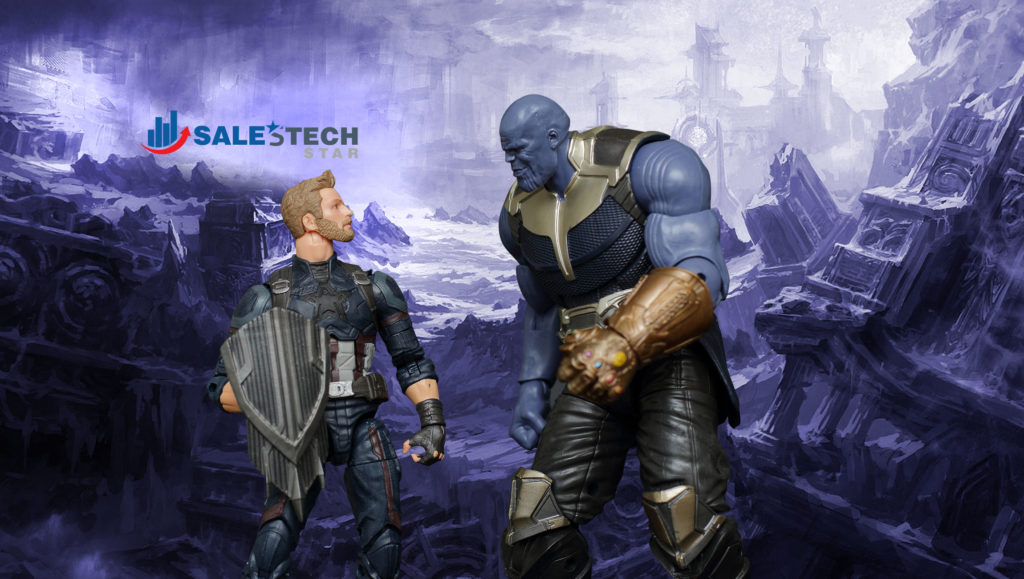When Consumers Spend More, It Translates to Spending More for Attention to Values and Digital Engagement and Retail Experience, Finds Mary Meeker Internet Trends 2018 Report
Climbing the Mount Everest is a tricky journey.
Does it look like this?

Do you know what this graph actually represents?
Well, if you can match the steep, it has to do something with the rise of Amazon and ecommerce players.

The internet is an exciting place to be, and with martech growing at an explosive rate, how could we miss the recently published Mary Meeker Internet Trends 2018.
For someone who has been watching the internet grow in the new millennium, this would be staggering –
- Between 2009 and 2017, the internet advertising spend grew by more than four times to stand at $88 billion.
- There is a significant gap between inflation rates of consumer goods sold offline and online.
- When consumers spend more, it translates to spending more for attention to values and digital engagement and retail experience.
- AI rules.
- Unemployment rates are lower than the baseline average for the past seventy years.. (Cheers!)
The nearly three hundred slides presentation documented how the internet and related technology have changed since 2015. With so much noise around personalization, data science, marketing and sales automation, data hygiene, Customer experiences, and the US Tech ecosystem, we certainly believe that the latest report on internet trends affirms the role of tech innovators (mostly, first-generation immigrants to the US), and their loyal online customers.
We sat down with the top business leaders to gauge how martech community can learn from the report and what they feel makes the best sense of the report findings.
Ecommerce Is Next Only to Thanos!

CEO of Conversocial, Joshua March, said, “Mary Meeker points towards a few trends all coming together: ecommerce is taking a bigger and bigger share of retail spend; social media is becoming a major driver of product discovery for ecommerce (with 55% of people buying a product after social media discovery), and messaging becoming completely pervasive as a communication channel. To stay on top of these trends it is essential that major brands are investing into the digital customer experience and capitalizing on messaging as a customer service and commerce channel.”
Joshua added, “Luckily as volumes rise in messaging, developments in artificial intelligence and machine learning are getting easier and easier with all the main tech platforms releasing tools to make machine learning faster and cheaper, with enterprises increasing their spending priority on AI. The combination of an increased digital transaction, messaging, and AI, will mean a future where far more customer conversations are happening over messaging, supported by bots and AI.”
Have Mobile, Go Mobile…

Dave Carruthers, CEO at Voxpopme, said, “With the acceleration of the speed of technological disruption it’s clear that mobile, and mobile video, will soon be ubiquitous. If you’re a brand that isn’t already connecting and engaging with consumers via mobile platforms this should be your wake-up call that you’re in danger of being left behind.”
People-Based Approach to Identity Set to Change the Way we Look at Mobile Advertising

John Donahue, Chief Product Officer, Sonobi, added, “Mary Meeker’s analysis on the opportunity in mobile couldn’t be more spot on. The mobile market is known to be softer. This is because it has constraints that have largely driven digital investment: inability to retain cookies, inability to match website visitors to mobile users, etc.”
John Donahue added, “The opportunity in mobile will be unlocked as we are able to get to a more people-based approach to identity, where marketers can be active, seamlessly, across channels. It is the reliance on other digital technologies that have driven slowness in the mobile media market, and those technology barriers are beginning to lift.”
Health is Wealth, so is Health Care Personalization

Sloan Gaon, CEO at Pulsepoint, said, “Health is personal. Health care should be too. What works for one health consumer doesn’t necessarily work for another. Today, radical health personalization is a reality because of the advances in data and technology. The health consumer journey has fundamentally changed because of the shift from analog to digital and from static data to real-time data.”
Sloan added, “Delivering care is changing as well. Urgent care facilities are the norm, not the exception. Wearable devices are changing how we monitor and improve health. Virtual and telemedicine healthcare is more convenient and efficient. Medical devices are now “smart”. Even clinical trials are being revolutionized with real-world data. The world of healthcare is now about data and technology and the health consumer is becoming the center of this personalized medicine revolution. As the health consumer gains more control, market forces will push down costs and remove inefficiencies from the healthcare system.”
There’s no End to AI Capabilities

Eric Moller, CTO, Atomic X, said, “Modern AI is just in its infancy, and already can match human abilities in certain areas. This is going to have huge impacts on how we interact with technology and with each other.”
Eric added, “I think most of us in North America tend to overlook this fact – but AI and general computing abilities are going to be the drivers of economic growth in the future. Politically, socially, and economically, we can’t stop investing in the next steps of computing; this includes AI, Quantum Computing, and other high-potential computing paradigms.”

Rick Kelly, Senior Vice President of Products & Research, Fuel Cycle, said, “Tech giants’ robust AI offerings enable every company, large and small, to incorporate artificial intelligence into their products. We expect everything from CPG to finance to healthcare to rapidly adopt AI over the next two years.”
2018: Infinity War on Internet Trends, as Chinese Dragon Catches On
Top five global internet companies are all based in the US. And, then the fun begins. Enter Alibaba, Tencent, Baidu, Xiaomi, and JD.com — the table tilts heavily towards the Chinese technology providers. What’s even more startling — Chinese consumers are more willing to share their data with the companies for better benefits compared to the US and other leading tech regions. With consumers moving to smaller screens and retaining greater content from video, 2018-2020 is set to be a revolutionary phase for the brands and beneficiaries alike.




















